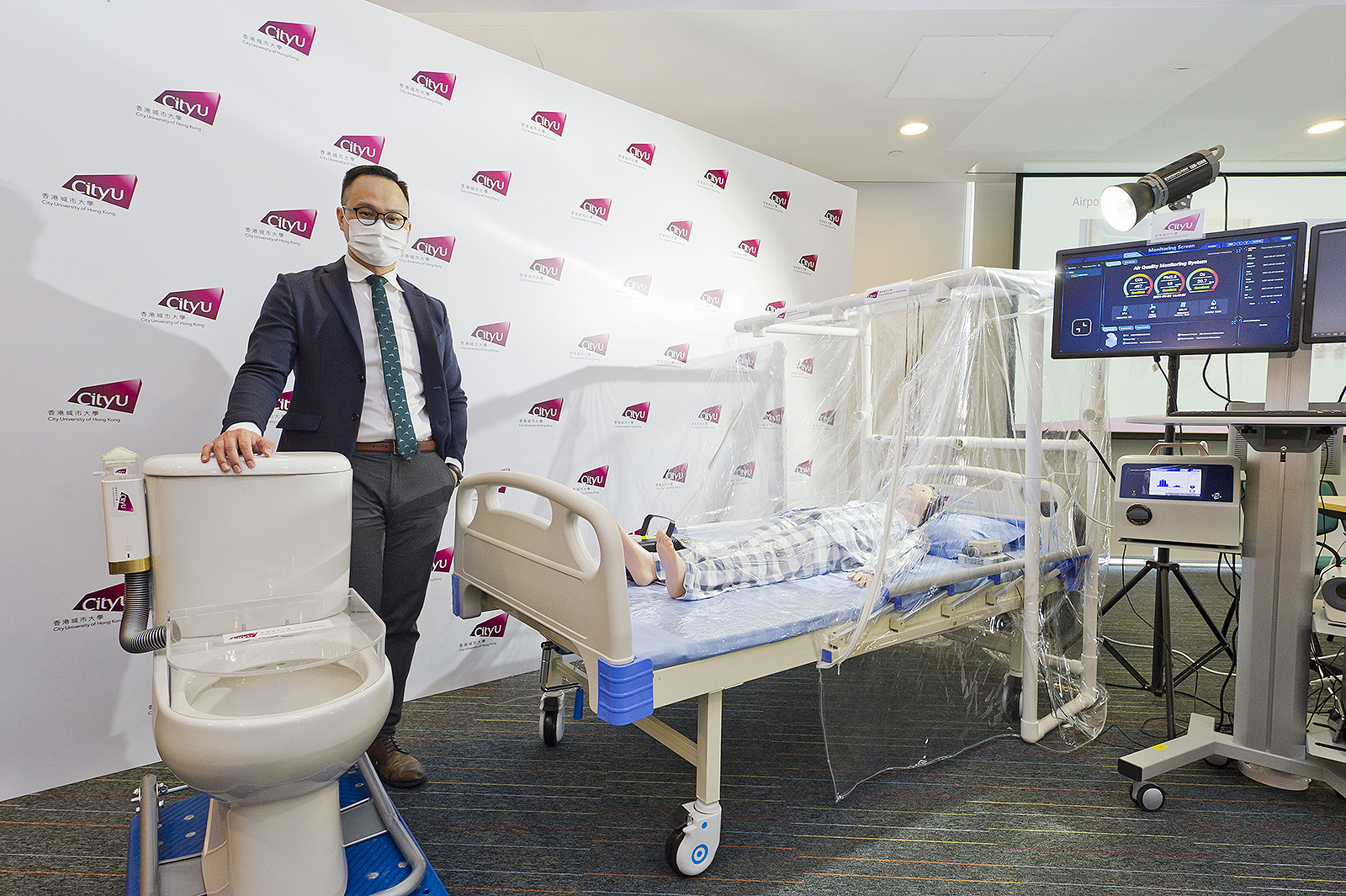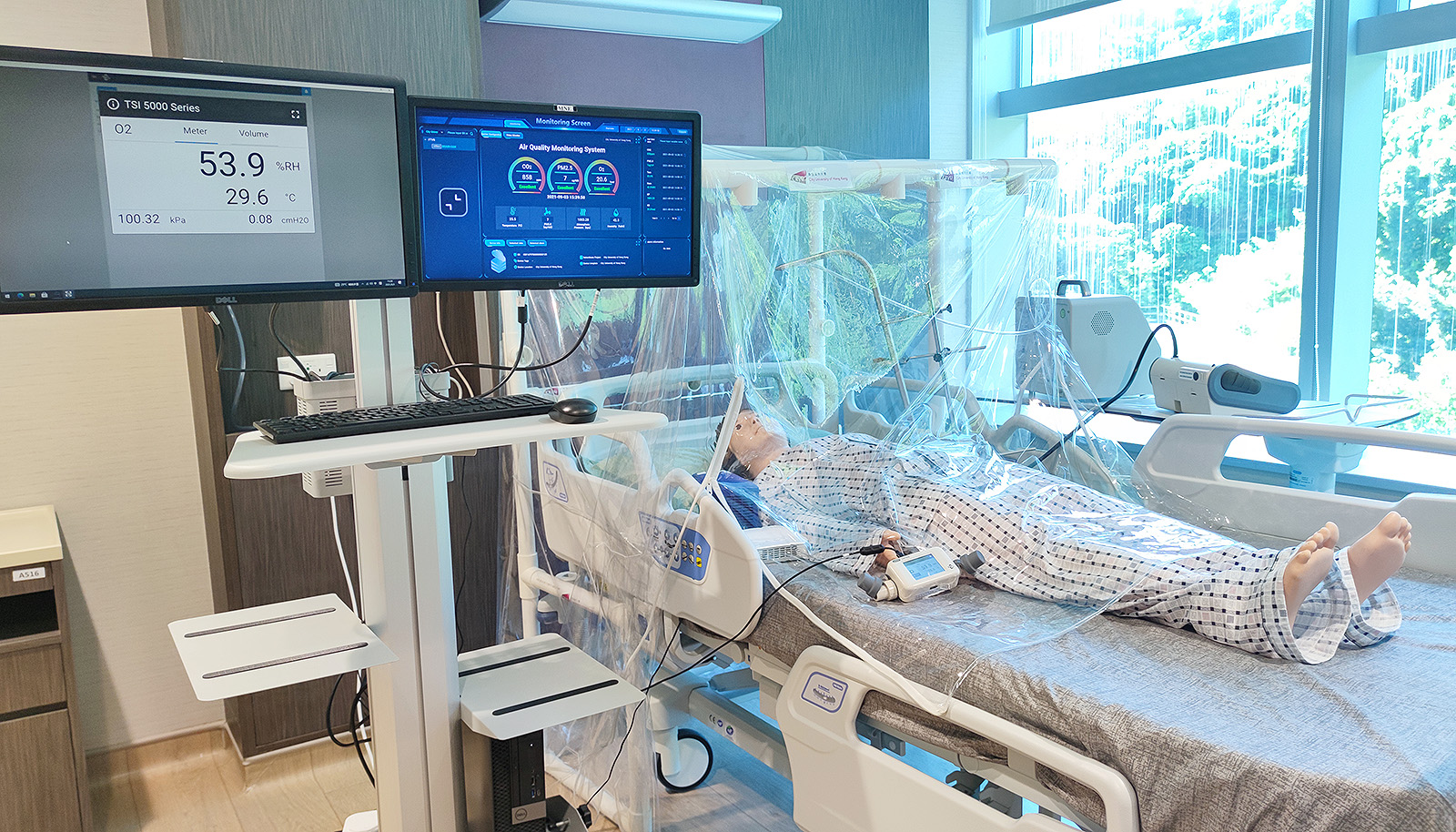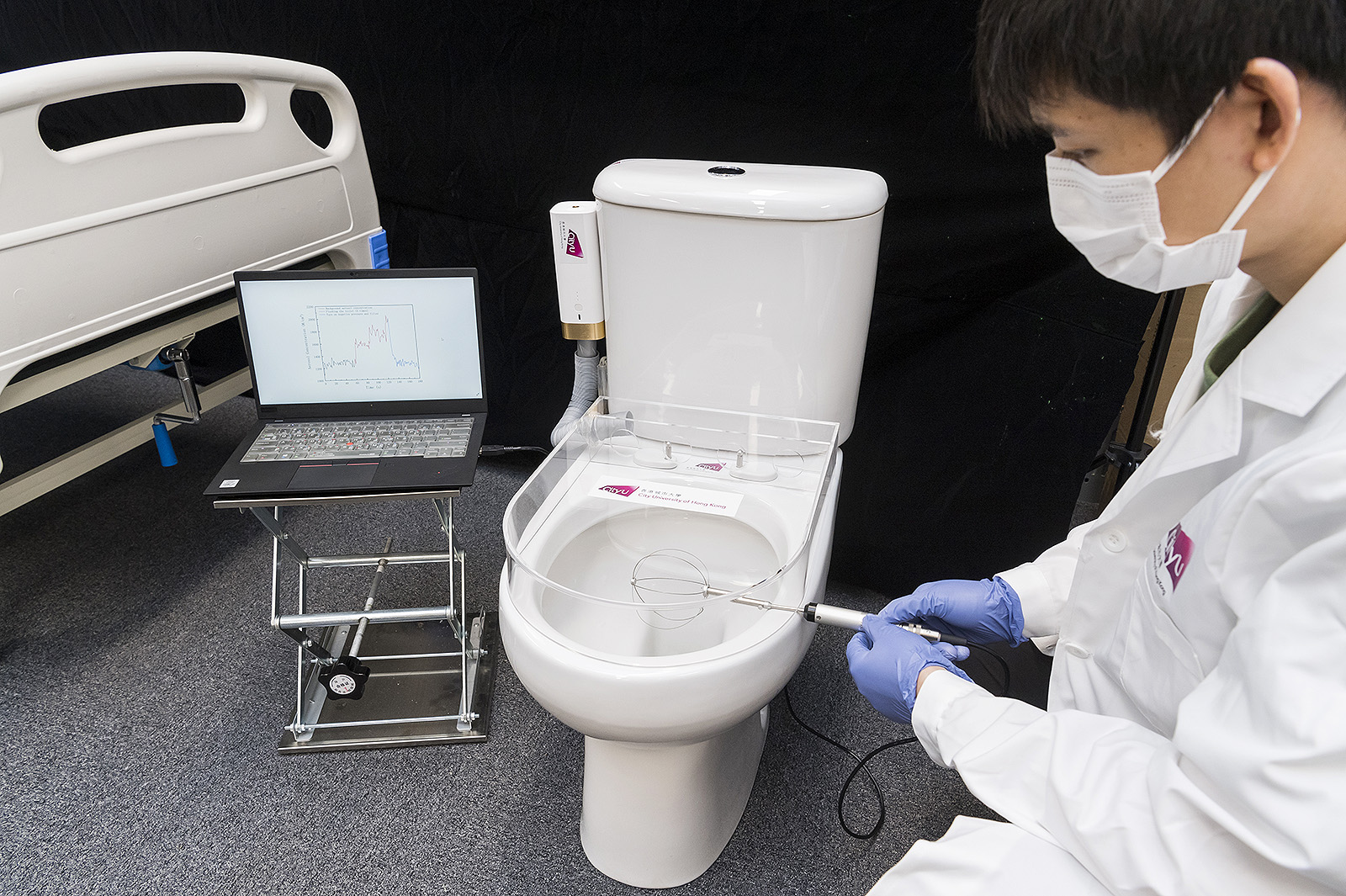CityU’s new fast-track ventilation system can thoroughly filter Covid-19

A new ventilation system developed by a research team at City University of Hong Kong (CityU) can thoroughly filter viral particles and quickly stop the spread of Covid-19 in the air and at low cost. The fast-track ventilation system is easy to install and can be used in high-risk places such as hospitals and washrooms, effectively reducing the risk of virus transmission.
The enclosed ventilation system, developed by Dr Steven Wang, Assistant Professor in CityU’s Department of Mechanical Engineering (MNE), has a pipe frame made of polyvinyl chloride (PVC) with extraction ports. The system is equipped with a transparent PVC hood and high efficiency particulate air (HEPA) filters, and can be placed on hospital beds to protect healthcare workers by effectively blocking and filtering viruses.

Dr Wang pointed out that a large quantity of aerosols are generated when medical workers perform cardiopulmonary resuscitation (CPR), tracheal intubation, or other respiratory tract-related treatment procedures for patients with Covid-19. As viruses spread via aerosols, this exposes the workers to a high risk of infection, even with high-standard personal protective equipment.
Equipped with a transparent PVC hood with an anti-virus coating, Dr Wang’s system stops patients’ respiratory droplets from spreading outside the system. Through extraction ports on the pipes, the droplets are trapped in the HEPA filtering system, which removes the viruses and transmits purified air back to the ward.
Experimental data shows that aerosols in an enclosed area can be thoroughly extracted by the system within two minutes. Its air change rate can be as high as 26 air changes per hour (ACH), higher than the rate of 12 ACH in a negative pressure ward.
Dr Wang has applied for a U.S. patent for the fast-track system. Trials have been conducted in Gleneagles Hospital Hong Kong (Gleneagles) since August. The results show that the system effectively stops viruses from spreading through aerosol transmission.
Setting up the system with pipes and a PVC hood is simple and takes only about five minutes per hospital bed. As inexpensive PVC is used to make the pipe frame, and only one central HEPA filtering system is required for each ward, the cost for setting up the system is low.
“A highly efficient filtering system at a low cost with simple installation is needed to provide sufficient protection for healthcare workers,” said Dr Wang. “Our system will help relieve demand for negative pressure wards, particularly if there is a severe pandemic.”

In addition, Dr Wang is currently collaborating with Gleneagles on a plan to install a tiny filtering system for toilet bowls. As 5.5 million aerosol droplets, on average, are produced by each toilet flush, viruses may remain in aerosols in a washroom even if the toilet lid is down. If the toilet has been used by a person with Covid-19, the next user will have a very high risk of viral exposure.
By using Dr Wang’s filtering system, aerosols produced by a toilet flush can be sucked out within five seconds via an extraction port installed on the toilet lid. The viruses are then trapped by the HEPA filter and inactivated by the UVC steriliser, thus significantly reducing the risk of virus transmission. The purified aerosol residues are then discharged through the drain.
Dr Wang’s research team will join HK Tech 300, CityU’s flagship innovation and entrepreneurship programme, to help transfer the technology into product and to promote its application in Hong Kong and beyond.
Other members of Dr Wang’s research team are Deng Wei and Wang Hongbo, PhD students of MNE. Faculty members at the University of Cambridge and Imperial College London helped conduct numerical simulations for Dr Wang’s system. With the assistance of Professor Michael G Irwin, Daniel C K Yu, Professor in Anaesthesiology from the Department of Anaesthesiology at the University of Hong Kong, the system is being tested in Gleneagles.